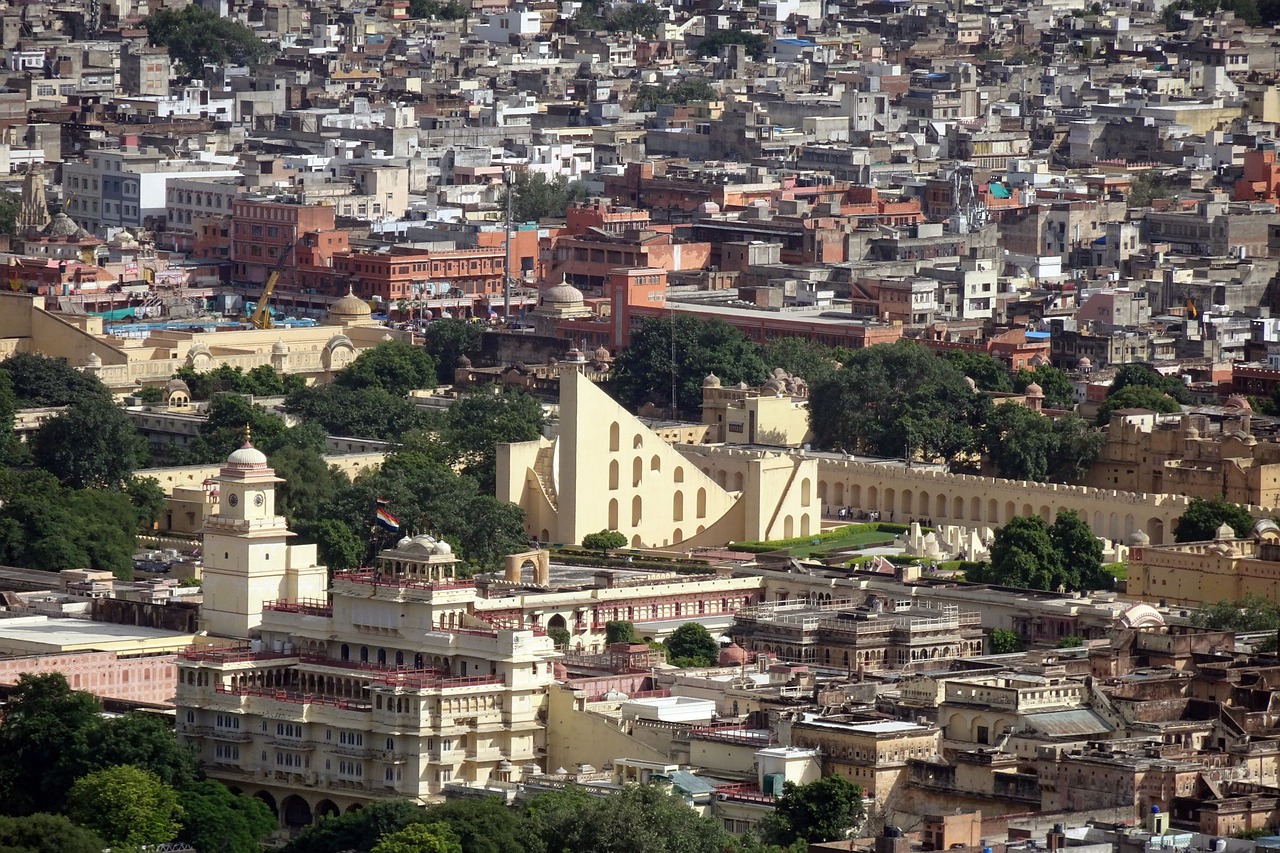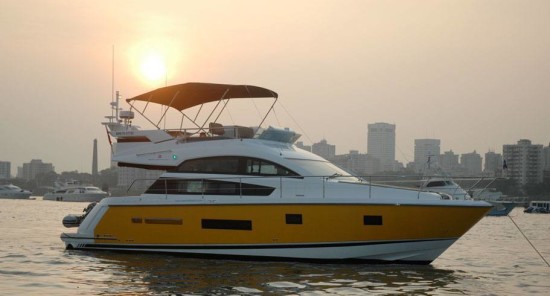Delhi offers so much to see and do! From world-famous historic attractions to bustling markets, Delhi has something special for every traveller.
Qutub Minar, a UNESCO World Heritage Site, stands out as an impressive sight. Atop its 73-meter brick minaret visitors will discover breathtaking views and an intriguing history. Cathay Pacific flights, including Auckland to Delhi, are now available to experience the highlights below.
Jantar Mantar
Jantar Mantar (meaning, the instrument of calculation) is one of five observatories Maharaja Sawai Jai Singh established throughout India and perhaps its most intricate. Home to 14 architectural astronomical instruments and designated a UNESCO World Heritage Site, Jantar Mantar stands out among large observatories as its unique sculptures will captivate even non-science or math enthusiasts.
Connaught Place’s open air theater, The India Gate is open to the public for free; however, hiring a guide is highly recommended to gain an understanding of its instruments. Many visitors visit independently as it is one of New Delhi’s popular attractions; others choose a guided tour that also visits landmarks like Gurudwara Bangla Sahib and Old Fort.
Attractions at this monument include Samrat Yantra, which is the world’s biggest stone sundial, and Rashiwalay Yantra with 12 gnomon dials for measuring all constellations ecliptic coordinates. Other prominent instruments are chhatri with its ramp that displays local time to an accuracy of two seconds; Laghu Smarat Yantra functions similarly as an enormous horoscope.
Jantar Mantar can be reached most efficiently via metro from either Janpath or Patel Chowk stations; alternatively, tourists can also rent autos or take tourist buses from any point within the city to arrive there.
Hazrat Nizamuddin Dargah
Hazrat Nizamuddin Auliya’s tomb, one of the world’s best-known Sufi saints, is one of Delhi’s premier tourist spots and revered places of worship for people from all religions and backgrounds alike. Built by Tughlaq dynasty in 1325 CE in South Delhi’s Dargah neighborhood. Jamaat Khana Masjid (an elaborate three bayed mosque topped with low domes), Atgah Khan’s tomb (Hazrat’s father), as well as a large sacred baoli or stepped well (dargah).
Nila Gumbad, an octagonal temple constructed with blue tiles and stone, can also be found within this complex, along with Maham Anga’s tomb – an influential wet nurse who served Emperor Akbar during his rule. Also of note nearby Nizamuddin Dargah are Delhi Zoo, Purana Qila Fort (16th Century Fort) and Ashokan Edict rock face engravings.
Accessing the dargah is relatively straightforward as it’s located close to multiple metro stations such as Pragati Maidan and Indraprastha, offering visitors multiple methods of travel including taxi, auto rickshaw or mobile apps for taxi booking. Devotees may visit any day except Friday; for Qawwali sessions on Thursday arrive by 7:00 PM at least.
Gurudwara Bangla Sahib
Gurudwara Bangla Sahib in Delhi is one of the premier Sikh religious places, famous for its delicate white marble structures, intricate carvings and large water tank (Sarovar). A notable feature is its golden dome and flag mast (Nishan Sahib), visible from a distance. Additionally, this complex contains main prayer room(s), langar hall where free meals are offered to visitors (Langar Hall), library and art gallery – among many other amenities.
This gurdwara welcomes visitors all day, every day of the year and entry is free. However, visitors must cover their heads and leave shoes before entering. Furthermore, this complex houses a higher secondary school, hospital, Baba Baghel Singh Museum & Library as well as an ‘langar’ or community kitchen which serves meals such as dal-chawal with sabzi roti and kheer that are deliciously filling.
Delhi offers many attractions, from its iconic Red Fort renowned for its magnificent Mughal architecture and exquisite floral arrangements, to Qutab Minar and Rajghat’s black marble cenotaph of Mahatma Gandhi which serves as a peaceful reminder of his enduring spirit as a freedom fighter. Additionally, this fascinating city combines its ancient past with vibrant modernity creating an exciting travel destination.
Red Fort
Red Fort or Laal Quila, one of India’s UNESCO World Heritage sites, stands as an impressive testimony to her rich history. Constructed with red sandstone walls featuring Hindu, Timurid and Persian architectural styles; it contains several opulent palaces as well as a mosque as part of its massive complex that spans octagonally. Furthermore, its distinct sections help visitors better appreciate this majestic monument.
Explore the impressive Diwan-i-Am, where Emperor Akbar held public audiences. Behind it lies Rang-Mahal or Color Palace – once used as a harem apartment for Queen Noor Jahan – before exploring other noteworthy buildings such as Khas Mahal which once served as his private residence and included a room featuring marble screens depicting Mizan-i-Adal or Scales of Justice, Tosha Khana used for storage purposes and Tosha Khana where they kept their robes and jewellery.
Other notable structures at the Red Fort include Fateh Burj, or Victory Tower – a large water reservoir wherein Emperor Shah Jahan would make his daily appearance for Jharokha Darshan ceremonies with his subjects.
Fort grounds also boast an expansive bazaar where visitors can purchase trinkets and souvenirs. An evening activity worth checking out is the Light and Sound show which reenacts key milestones of India’s history that are connected to this fort; tickets for this show can be obtained at Fort ticket counter.
Old Fort
The Old Fort in Delhi is one of its iconic landmarks and historic forts built of red sandstone by Shah Jahan in 1638, known for being where Prime Minister of India unfurls the national flag every Independence Day. Additionally, it houses numerous museums that make this complex a top tourist attraction in its own right.
This massive fortress is believed to have been constructed on the site of ancient Delhi, Indraprastha as mentioned in Mahabharata Hindu text. Selected as Humayun’s residence by Mughal Emperor Humayun and later extended by Sher Shah Suri fort has Sher Mandal, Humayun’s Library and Quila-i-Kunha Mosque with walls lined with overhanging balconies called Chatteris that showcase Rajasthani architecture.
Archaeological excavations have unearthed prehistoric tools, potteries from Mauryan, Gupta Sunga, Kushan and Delhi Sultanate eras as well as idols of various gods and goddesses from Purana Qila Museum within its fortress – making this must-see museum an absolute must for history enthusiasts as well as tourists who wish to discover more of this city’s past.
The fortress can easily be reached via metro as it lies close to Pragati Maidan. For optimal viewing conditions, winter (November to February) is considered the optimal time. Monsoon season and summer can become too humid and hot; monsoon and summer rain should also be avoided when visiting. Other noteworthy locations nearby include Jama Masjid and Chandni Chowk (India’s first pedestrian mall). Also worth seeing is Lotus Temple – an architectural masterpiece which draws visitors from around the globe.


